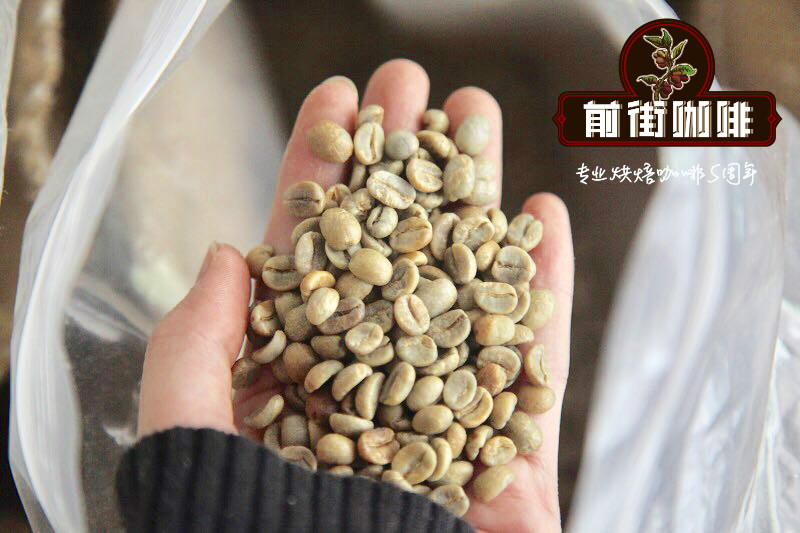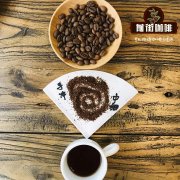Differences between Kenyan Coffee beans and Mantenin Coffee beans characteristics of Kenyan Coffee varieties

Professional coffee knowledge exchange more coffee bean information please follow the coffee workshop (Wechat official account cafe_style)
"Kenya" is one of the major coffee producing countries. More than 6 million people in the country are engaged in the coffee industry, mostly in the form of a combination of small farmers and cooperatives. Coffee trees in Kenya are mostly planted at 1400 m-2000 m above sea level, and the growing areas include Ruiri, Thika, Kirinyaga and Mt. Kenya West, Nyeri, Kiambu and Muranga. Mainly in the foothills of Mt.Kenya and Aberdare. There are many producing areas in Kenya that strive to preserve the native forest ecosystem, protect the natural gene pool, support the reproduction of wild coffee varieties and breed a variety of coffee trees. A bourbon line screened and cultivated by French and British missionaries and researchers in Kenya at the beginning of the 20th century. Over the past hundred years, it has adapted to the high concentration of phosphate soil in Kenya, giving birth to the special sour and fragrant spirit of Kenyan beans, which is different from bourbon beans in Central and South America. This Kenyan native species was created by Scott Laboratories in 1930, known as SL for short. Agronomists wanted to find a kind of bourbon with high yield and resistance to diseases and insect pests, and obtained SL28 through experiments. SL28 is a genetic variant with a mixed pedigree of French missionaries, mochas and Yementibica. The original goal of breeding SL28 was to mass-produce coffee beans with high quality and resistance to diseases and insect pests. Although the yield of SL28 was not as high as expected, the copper leaf color and broad bean-shaped beans have great sweetness, balance and complex flavor, as well as remarkable citrus and plum characteristics. This important variety leads us to the unique Kenyan style: strong acidity, rich taste and beautiful balance. Kenya AA is one of them.
AA is a class name for the currency of raw coffee beans. The grade of raw coffee beans is generally AA,A,B,C, which mainly refers to the size of coffee beans. AA refers to coffee beans with larger particles, and coffee beans with particles of more than 17 mesh (17 mesh = 6.75MM).
SL28 is a delicious variety, suitable for growing in the middle and high altitude areas where leaf rust is not serious. It can produce 1.8 tons of raw beans per hectare and drink the charming sour plum flavor to reflect the national treasure of Kenya.
1. Kenya and Mantenin coffee, not to mention the grade, are different in terms of region alone. Coffee from Africa itself has the aroma of tropical flowers and fruits. On Kenyan coffee, this aroma is not particularly obvious, but it is also an indelible feature. On the other hand, the aroma of Indonesian coffee is more inclined to tobacco and fruit trees.
2. The entrance of Kenyan coffee is obviously sour, and the sour feeling is a little exciting, and it is more inclined to yellow citric acid. No matter how the roasting is adjusted, there will be a slight sense of astringency, of course not strong. Go back to Gan.
And Mantenin coffee, the entrance is first of all smoke and bitter, the acidity is low and clean, the special aroma of wet planing fermentation is also very comfortable, strong and long-lasting!
END
Important Notice :
前街咖啡 FrontStreet Coffee has moved to new addredd:
FrontStreet Coffee Address: 315,Donghua East Road,GuangZhou
Tel:020 38364473
- Prev

Why are coffee beans so expensive? What's so great about it?
Professional coffee knowledge exchange More coffee bean information Please pay attention to coffee workshop (Weixin Official Accounts cafe_style)[Jensen Manor] Guixia, this manor is mainly for domestic sales but not for export. Carl Jensen was originally Swiss. He fell in love with the peaks and valleys of Panama Volcan in the early 1940s and started Panama's first automation after marrying his wife Margaret.
- Next

The special flavor of Huang Kaduai washed by the manor in spring is refreshing.
Professional coffee knowledge exchange more coffee bean information please follow Coffee Workshop (Wechat cafe_style) Brazil Primavera Washed Yellow Catuai Columbia Vera Spring Manor washing Cadu é Vera province (Huila) is located in western Colombia, coffee grows on the slopes of the canyons formed by the western seaside mountains and the eastern mountains, among which St. Augu
Related
- Does Rose Summer choose Blue, Green or Red? Detailed explanation of Rose Summer Coffee plots and Classification in Panamanian Jade Manor
- What is the difference between the origin, producing area, processing plant, cooperative and manor of coffee beans?
- How fine does the espresso powder fit? how to grind the espresso?
- Sca coffee roasting degree color card coffee roasting degree 8 roasting color values what do you mean?
- The practice of lattes: how to make lattes at home
- Introduction to Indonesian Fine Coffee beans-- Java Coffee producing area of Indonesian Arabica Coffee
- How much will the flavor of light and medium roasted rose summer be expressed? What baking level is rose summer suitable for?
- Introduction to the characteristics of washing, sun-drying or wet-planing coffee commonly used in Mantenin, Indonesia
- Price characteristics of Arabica Coffee Bean Starbucks introduction to Manning Coffee Bean Taste producing area Variety Manor
- What is the authentic Yega flavor? What are the flavor characteristics of the really excellent Yejasuffi coffee beans?

